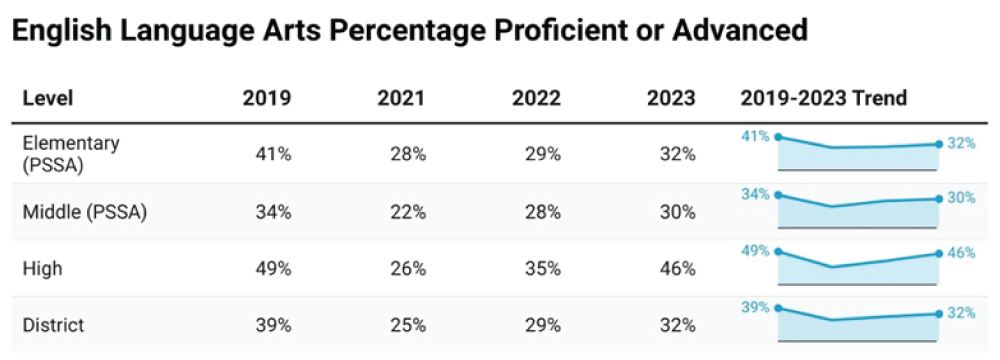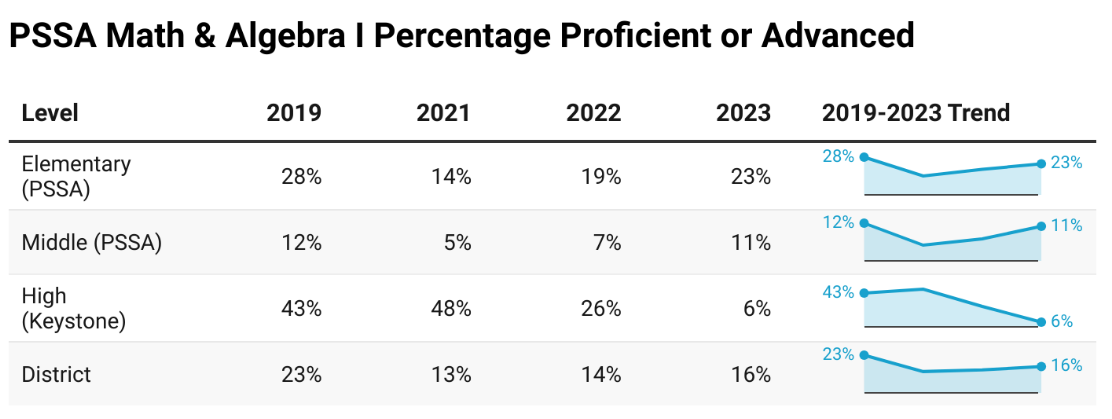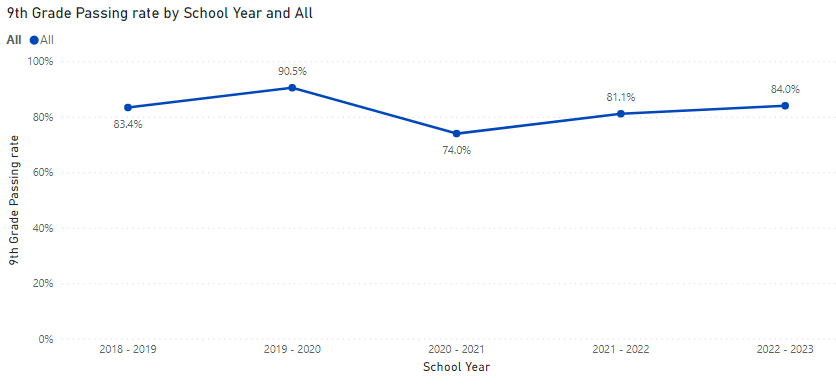Table of Contents
Vision, Mission, & Core Values | Portrait of a Graduate | Understanding the Plan
Strategic Focus Area: Academic Excellence | Strategic Focus Area: Culture of Belonging
Strategic Focus Area: Family & Community Engagement | Strategic Focus Area: Talent Optimization
Strategic Focus Area: Organizational Excellence
Implementation | Planning Process | Data Analysis | Acknowledgements
Doesn’t everyone have a song about their strategic plan? We’re thrilled to unveil the World Premier Music Video of Zyaire & The Facilities Band’s “Lancaster’s Plan”!
This dynamic track celebrates the School District of Lancaster’s exciting new five-year strategic plan, capturing our vision for the future and the incredible journey ahead. Check out the video and join us in embracing the new school year with enthusiasm and pride. Welcome back to school, SDoL! Let’s make this year unforgettable.
Vision
We cultivate a community of global citizens who graduate academically, emotionally, and socially prepared to succeed.
Mission
We celebrate and empower every learner, fostering a welcoming community where our students can discover their academic strengths, build confidence, and find a sense of belonging.

Core Value
High Expectations
We provide a challenging and engaging curriculum to all, confident that every learner can rise to their highest potential.
Core Value
Collaboration
We learn, grow, and achieve together through teamwork, open communications, and shared responsibility.
Core Value
Empowerment
We empower every learner by fostering a growth mindset and encouraging them to take ownership of their learning journey, becoming self-directed and lifelong learners.
Core Value
Health & Wellness
We promote physical, mental and emotional well-being as foundational to the success of every learner in our school community.
Core Value
Equity & Diversity
We value diversity of thought, background, and experience, cultivating a learning environment enriched by multiple perspectives that empower our learners.
Understanding the plan
How our strategic plan is organized
Strategic Focus Area
The School District of Lancaster’s strategic plan is organized around five strategic focus areas: Academic Excellence, Culture of Belonging, Family & Community Engagement, Talent Optimization, and Organizational Excellence. The steering committee identified these areas through an inclusive and participatory process, drawing on extensive community feedback including stakeholder surveys a nd focus groups.
- Academic Excellence reflects the community’s aspirations for rigorous and equitable educational experiences for all students.
- A Culture of Belonging underscores the community’s emphasis on fostering inclusive environments where every student feels valued and supported.
- Family & Community Engagement is essential for building strong partnerships and empowering families as partners in education.
- Talent Optimization is necessary to meet the objectives in the focus areas above, and require the district to recruit, retain, and develop highly skilled and diverse educators.
- Organizational Excellence acknowledges the importance of efficient and effective systems to support the district’s mission and vision.
2029 Targets
Each strategic focus area has a set of targets the district aims to hit by the end of the five-year plan.
Strategic Objective
Strategic objectives indicate what needs to improve, change, or happen in order for the 2029 targets to be reached. Each strategic objective has a set of key indicators that will be monitored in addition to the 2029 targets.
Action Step
Action steps are activities or tasks that must be completed in order to meet the related objective. Each strategic objective
and action step noted with (EQ) is also a district equity strategy.
2029 Targets
- Increase English Language Arts (ELA) proficiency by three percentage points each year for five years, as measured by state assessments
- Increase Math proficiency by three percentage points each year for five years, as measured by state assessments
- Decrease achievement gaps among subgroups where they exist
- Decrease the number of students scoring below basic in Math by three percentage points each year for five years, as measured by state assessments
Equity Commitment
The School District of Lancaster strives to eliminate disparities by prioritizing an inclusive and equitable education, ensuring every student has access to highly effective instruction, standards aligned resources, and support for academic success and engagement.
Legend: P = Planning | I = Implementation | R = Refinement
Strategic Objective 1a: Promote academic excellence through a culturally responsive curriculum, evidence-based instructional strategies, and individualized support for struggling students (EQ)
| Action Steps | 24-25 | 25-26 | 26-27 | 27-28 | 28-29 |
|---|---|---|---|---|---|
| Provide professional development on culturally responsive teaching to assist educators in creating classrooms where all students feel welcome (E) | I | I | I | I | I |
| Provide professional development on Structured Literacy | I | P | R | I | P |
| Strengthen the Multi-Tiered System of Support (MTSS) framework by implementing advanced tier interventions for struggling students (E) | I | R | R | R | R |
| Enhance advanced tier intervention for students in grades K-2 through targeted strategies and personalized support, fostering comprehensive literacy skills development (E) | I | R | R | R | R |
| Reimagine how academic interventions are provided in middle school (E) | I | R | R | R | R |
Strategic Objective 1b: Increase student engagement by incorporating interactive activities that give students the opportunity to express themselves and make choices about their learning
| Action Steps | 24-25 | 25-26 | 26-27 | 27-28 | 28-29 |
|---|---|---|---|---|---|
| Identify Project-Based Learning opportunities that make learning more interesting and relevant (E) | P | P | I | I | I |
| Implement evidence based high impact teaching strategies | I | R | R | R | R |
| Use digital tools to make teaching more effective and engaging for students | I | P | R | I | P |
| Evaluate the implementation of the Middle Years Programme (MYP) focusing on curriculum alignment, assessment practices, and student engagement (E) | P | I | I | I | R |
Strategic Objective 1c: Ensure all secondary students have equal access to standards-aligned math curriculum, skilled teaching, high expectations, and the support they need to reach their full potential (EQ)
| Action Steps | 24-25 | 25-26 | 26-27 | 27-28 | 28-29 |
|---|---|---|---|---|---|
| Create a roadmap for learning math from Grade 5 to Algebra II that ensures alignment between grades | P | P | I | I | I |
| Offer Pre-Honors and Honors classes for middle schoolers, making sure that all students have the tools they need to access high level content (E) | I | I | R | I | I |
| Introduce dedicated Math Interventionists at the middle school level (E) | I | I | I | R | I |
Strategic Objective 1d: Expand educational programs that offer students exposure to a wide range of skills and opportunities tailored to their diverse interests and talents (EQ)
| Action Steps | 24-25 | 25-26 | 26-27 | 27-28 | 28-29 |
|---|---|---|---|---|---|
| Incorporate diverse educational experiences for students by integrating experiential learning, mentorship, and volunteer opportunities (E) | I | P | I | R | I |
| Explore integration of Middle School Electives (E) | P | I | I | I | R |
| Encourage hands-on exploration of digital media and technology for research, project-based learning, and collaborative problem-solving | I | I | I | I | I |
2029 Targets
- Increase school climate index, as collected in the annual student survey to 8.5 by 2029
- Reduce chronic absenteeism by five percentage points by 2029
- Increase the 4-year cohort graduation rate to 85% by 2029
Equity Commitment
The School District of Lancaster is committed to fostering a culture of inclusion and belonging by actively confronting systemic barriers, providing equitable access to resources, and cultivating an environment where every voice is heard, respected, and empowered.
Legend: P = Planning | I = Implementation | R = Refinement
Strategic Objective 2a: Implement and assess regular systems and practices that respect different cultures to help students and staff feel comfortable, cared for, and secure in school in all aspects: socially, emotionally, intellectually, and physically
| Action Steps | 24-25 | 25-26 | 26-27 | 27-28 | 28-29 |
|---|---|---|---|---|---|
| Assess and enhance support for students related to behavior, attendance, and social-emotional learning | I | I | R | R | R |
| Increase social and emotional learning (SEL) practices in schools through the implementation and integration of district-wide programs | P | I | I | R | R |
| Improve school climate through consistent implementation and refinement of the district Standards and Expectations Handbook | P | I | R | R | R |
| Support all students through consistent implementation of student progressive discipline and restorative practices (E) | I | I | R | R | R |
| Enhance transitions between schools at all levels through and after graduation | P | I | I | R | R |
Strategic Objective 2b: Enhance inclusivity district-wide, ensuring that everyone is welcomed, appreciated, and their distinctiveness celebrated in all environments
| Action Steps | 24-25 | 25-26 | 26-27 | 27-28 | 28-29 |
|---|---|---|---|---|---|
| Provide professional learning opportunities that will enhance inclusive practices with all staff (E) | P | I | I | R | R |
| Expand opportunities for student participation in all school activities, incentives, and overall experiences (E) | I | I | R | R | R |
| Ensure access to appropriate and equitable educational placements for all students (E) | I | I | R | R | R |
| Review and revise policies and administrative regulations related to inclusive practices (E) | P | I | I | R | R |
Strategic Objective 2c: Establish a welcoming atmosphere where everyone can play a part in and take responsibility for our students’ achievements in college, career, and beyond
| Action Steps | 24-25 | 25-26 | 26-27 | 27-28 | 28-29 |
|---|---|---|---|---|---|
| Implement a comprehensive school counseling plan | I | I | R | R | R |
| Enhance pathways for all partners in the community to maximize opportunities for student success through graduation and beyond | P | I | I | R | R |
| Increase student access to career coaching and development (E) | P | I | I | R | R |
| Expand resources available to students after graduation (E) | P | P | I | I | R |
Strategic Objective 2d: Enhance community involvement and cooperation to help decrease youth violence within the school community
| Action Steps | 24-25 | 25-26 | 26-27 | 27-28 | 28-29 |
|---|---|---|---|---|---|
| Implement the strategies identified by the community task force to reduce youth violence | P | I | I | R | R |
| Enhance community partnerships to expand opportunities for students outside of school | P | I | I | R | R |
| Develop a youth employment program (E) | P | I | I | R | R |
| Explore youth violence prevention programming to identify appropriate implementation strategies | P | I | I | R | R |
Strategic Objective 2e: Make the health and wellness of students, staff, and families a top priority
| Action Steps | 24-25 | 25-26 | 26-27 | 27-28 | 28-29 |
|---|---|---|---|---|---|
| Create a wellness team to align to the comprehensive school wellness model | P | I | I | I | R |
| Enhance the quality and variety of student meals | I | I | R | R | R |
| Implement the student-centered athletics plan | I | I | R | R | R |
| Expand wellness opportunities for students through community partnerships | P | I | I | R | R |
2029 Targets
- Increase the family satisfaction score to 10.0 by 2029
- Increase percentage of students who are served by a community partner by 10 percentage points by 2029
Equity Commitment
The School District of Lancaster recognizes that true educational equity cannot be achieved without the active engagement and support of our community. We seek to build relationships with families and partners, ensuring that every family, regardless of background or circumstance, feels valued, respected, and empowered to participate in their child’s education journey.
Legend: P = Planning | I = Implementation | R = Refinement
Strategic Objective 3a: Encourage families, schools, and communities to work together to help students succeed by collaborating well, communicating regularly, and using tools that
help learning continue outside of school
| Action Steps | 24-25 | 25-26 | 26-27 | 27-28 | 28-29 |
|---|---|---|---|---|---|
| Standardize all communications from school to home using reliable methods and tools based on data | P | P | I | I | R |
| Work with family engagement liaisons in every school to implement strategies that are proven to work well | P | I | I | R | R |
| Create a toolkit/checklist for school leaders and family engagement teams to help them better involve families in the education of their children (E) | P | I | I | R | R |
| Create a calendar of family events for the whole district that help reach the district's strategic objectives (E) | I | I | R | R | R |
| Enhance customer service throughout the district by prioritizing a family-focused approach (E) | P | I | P | I | R |
Strategic Objective 3b: Build alliances with community groups, advocates, and other involved parties to improve conditions for students to learn well and grow healthily
| Action Steps | 24-25 | 25-26 | 26-27 | 27-28 | 28-29 |
|---|---|---|---|---|---|
| Develop and sustain a clear plan for community schools that meets the special needs of each school (E) | P | P | I | I | I |
| Use reliable data sources to decide where community resources will make the biggest difference (E) | P | P | I | I | I |
| Create and implement a process to welcome and introduce community partners, along with programs to help them connect with each other | P | I | I | R | R |
| Speak up for the district's strategic objectives to state and local government | I | I | I | R | R |
Strategic Objective 3c: Create communication materials and platforms that involve everyone, show how diverse the school community is, make people want to be part of the district, and show what the district believes in
| Action Steps | 24-25 | 25-26 | 26-27 | 27-28 | 28-29 |
|---|---|---|---|---|---|
| Create a detailed plan for media production at the district level that supports the district’s strategic plan | P | I | I | R | R |
| Use the district website and social media to connect with important stakeholders in the community | I | R | I | I | I |
| Enhance cooperation between schools and the central office to make sure all communications use the same tools | P | P | I | I | R |
| Manage the district's brand to make sure that identity standards and social media use are consistent | I | I | I | R | R |
| Roll out a new internal communications plan using a fresh intranet platform, working closely with important people within the organization | P | I | I | R | R |
| Increase the number of language options available in the communications department (E) | P | I | I | R | R |
2029 Targets
- Increase staff satisfaction score to 27.1 points by 2029
- Decrease the gap between the percentage of students of color and the staff of color by five percentage points by 2029
Equity Commitment
The School District of Lancaster demonstrates its commitment to fairness and inclusivity across the organization through talent acquisition and retention strategies aimed at diversifying our workforce and investing in our employees.
Legend: P = Planning | I = Implementation | R = Refinement
Strategic Objective 4a: Adopt inventive hiring tactics to bring in employees who reflect the varied makeup of our community
| Action Steps | 24-25 | 25-26 | 26-27 | 27-28 | 28-29 |
|---|---|---|---|---|---|
| Update job descriptions to accurately show skills and essential functions and attract candidates who share the district’s values | P | P | I | I | I |
| Explore and create an authentic recruitment brand that highlights our commitment to diversity, equity, and inclusion (E) | P | I | R | R | R |
| Partner with universities that reflect our community to discover, engage, and hire skilled individuals (E) | I | I | R | R | R |
| Identify and advertise multiple teacher pathways that allow employees to train while working in our schools | I | I | I | R | R |
| Stay in touch with students from the district who take part in teacher training programs and find ways to encourage them to work for the district in the future | P | I | I | I | R |
| Identify positions that are difficult to fill and create plans to identify people to fill the positions | I | I | R | R | R |
Strategic Objective 4b: Create work environments that include everyone and offer support to make sure employees have the best experience possible
| Action Steps | 24-25 | 25-26 | 26-27 | 27-28 | 28-29 |
|---|---|---|---|---|---|
| Create and enhance strategies to develop current and future leaders and identify career paths | P | P | I | I | R |
| Launch surveys that provide building and district leaders with feedback from their employees | P | I | I | R | R |
| Expand services aimed at providing excellent customer service for current and future employees | P | I | I | I | R |
| Create and improve retention programs, such as wellness initiatives, Employee Resource Groups, and employee recognition efforts (E) | I | I | I | I | R |
Strategic Objective 4c: Establish and strengthen standards of practice and compliance to ensure that current and future employees are treated fairly
| Action Steps | 24-25 | 25-26 | 26-27 | 27-28 | 28-29 |
|---|---|---|---|---|---|
| Establish a Talent Action Committee (TAC) to work together on human resources initiatives | P | P | I | I | R |
| Create training and toolkits for supervisors to improve hiring process and employee relationships | I | I | I | I | I |
| Design data tools to ensure compliance and goal measurement | I | I | I | R | R |
| Utilize performance management systems to identify areas of growth in reaching academic and organizational outcomes | I | I | I | R | R |
| Design and implement a staffing framework to ensure human resources are distributed equitably (E) | P | I | I | I | R |
2029 Targets
- By 2029, at least 90% of eligible resident students enrolled in the district
- By 2029, attain a minimum average satisfaction rating of four out of five from stakeholders, post-school renovation
- By 2029, 75% of financial allocations to schools will be equitably distributed based on student and school needs
Equity Commitment
The School District of Lancaster is dedicated to fostering an environment where every individual can thrive by cultivating optimal systems and processes, providing equitable access to resources, and ensuring opportunities for all stakeholders, with the aim to dismantle barriers and disparities.
Legend: P = Planning | I = Implementation | R = Refinement
Strategic Objective 5a: Establish and execute transparent criteria and metrics for evaluating the effectiveness of resource allocation, with a focus on closing achievement gaps and addressing disparities in educational outcomes
| Action Steps | 24-25 | 25-26 | 26-27 | 27-28 | 28-29 |
|---|---|---|---|---|---|
| Develop a process to identify and allocate resources to our academic priorities | I | I | R | R | R |
| Establish clear criteria and procedures for fairly distributing resources, and implement a monitoring and evaluation system to regularly assess and adapt resource allocation practices to address emerging needs and priorities (E) | P | I | R | R | R |
| Offer training and support to school administrators and staff on managing budgets and using resources effectively, aiming to promote fairness and efficiency | P | I | I | R | R |
| Develop a dashboard to provide transparency in processes and reporting to stakeholders | P | P | I | I | R |
Strategic Objective 5b: Create a comprehensive facilities master plan that aligns with educational goals, community needs, and sustainability objectives, ensuring all students have equitable access to safe, modern, and functional learning environments
| Action Steps | 24-25 | 25-26 | 26-27 | 27-28 | 28-29 |
|---|---|---|---|---|---|
| Conduct a thorough assessment of current facilities to pinpoint areas needing improvement, renovation, or expansion | P | I | R | R | R |
| Establish a thorough preventative maintenance program | P | P | I | I | I |
| Prioritize investments in facility upgrades, emphasizing safety, accessibility, and instructional requirements, with a keen focus on equity and inclusion | P | I | R | R | R |
| Identify and explore potential partnerships with community organizations, government agencies, and private entities to pool resources for facility improvements and expansion projects | P | P | P | I | I |
| Create and execute a district-wide recycling and sustainability initiative | P | I | R | R | R |
Strategic Objective 5c: Investigate innovative approaches to optimize resources and enhance operational efficiency considering declining enrollment
| Action Steps | 24-25 | 25-26 | 26-27 | 27-28 | 28-29 |
|---|---|---|---|---|---|
| Establish a process for continually analyzing demographic data and enrollment projections to accurately anticipate future changes in student population | P | I | R | R | R |
| Examine enrollment patterns in alternative education, special education, English Language Development (ELD), and other specialized programs | P | I | R | R | R |
| Review elementary and middle school boundaries and adjust them to account for changes in the population of school-aged children residing within each attendance zone | P | P | I | R | R |
| Perform a comprehensive census across the district to determine the number of students who are considered eligible to attend district schools | P | P | I | R | R |
| Create strategies to retain students and attract families, which could involve improving academic programs, broadening extracurricular activities, or launching marketing campaigns | P | I | R | R | R |
Strategic Objective 5d: Improve data quality, data capacity, and data culture to ensure strategic decision making across the organization that improves outcomes
| Action Steps | 24-25 | 25-26 | 26-27 | 27-28 | 28-29 |
|---|---|---|---|---|---|
| Formulate a district-wide vision and plan to bolster data capacity, foster a culture driven by data, and elevate data quality across the district | P | I | I | I | R |
| Develop a seamless data system that connects all critical district data sources centrally, making it easy for district stakeholders to access and use the data | I | I | I | I | R |
| Develop analytical tools and resources, like dynamic dashboards, to empower stakeholders to make informed decisions | I | I | I | I | I |
| Offer thorough training and coaching for district staff, concentrating on improving data literacy and optimizing the use of available resources to enable informed, data-driven decision-making | P | I | I | I | I |
| Conduct in-depth research, analysis, and continual program evaluations to assess the effectiveness of investments in district efforts | I | I | I | I | I |
| Develop automated processes to consistently monitor and address data quality issues throughout the organization | I | I | I | I | I |
We want to make sure everyone understands and supports our plan for the future. We’ll talk to people in different ways, like meetings and presentations, to explain what we’re doing and why it’s important. We’ll also listen to their thoughts and ideas to make sure we’re on the right track.
Our teams will work together to focus on different parts of the plan. Some teams will work on specific areas, while others will work on things that affect everyone. This way, we can make sure we’re all working together towards the same goals.
We’ll keep you updated on how things are going with regular reports and meetings. If we run into any problems, we’ll talk about them and figure out the best way to fix them together.
Everyday plans will be linked to our bigger goals, so everything we do helps us move forward. We’ll set clear goals and keep track of our progress to make sure we’re staying on course.
In the fall of 2023, the School District of Lancaster embarked on a strategic planning journey facilitated by Insight Education Group, leveraging their standard methodology and guided by a cross-functional, community-based Strategic Planning Steering Committee. This committee, composed of diverse stakeholders including educators, parents, community leaders, and representatives from local organizations, played a pivotal role in shaping the direction of the district’s future. Through collaborative workshops and data-driven discussions facilitated by Insight Education Group, the committee provided invaluable insights and perspectives, ensuring that the resulting strategic plan reflected the collective aspirations and priorities of the entire community.
7 | Focus Groups
4 | School Board Workshops
513 | Survey Participants
Driven by a commitment to excellence, the strategic planning process began with a comprehensive assessment of the district’s current performance and challenges. Insight Education Group guided the steering committee through an examination of academic and non-academic data, stakeholder feedback through surveys and focus groups, and existing policies, laying the groundwork for a shared vision of educational success.
Through an iterative process, the committee and School District of Lancaster Board created and refined foundational statements, including an updated mission, vision, core values, and portrait of a graduate. Based on these foundational concepts, the Superintendent and Senior Leadership Team collaborated to develop strategic objectives, actionable strategies, and key indicators aimed at advancing student achievement, enhancing teaching practices, and fostering a culture of equity and inclusion.
The resulting strategic plan serves as a roadmap for the School District of Lancaster, outlining clear strategic objectives and action steps to ensure that every student receives a high-quality education that prepares them for success in a dynamic and interconnected world.
In order to ensure that the strategic plan is effective in meeting our objectives and fulfilling our vision, the steering committee reviewed and analyzed data from every sector of the organization. Included in this plan are examples of some of the data that the committee relied on when crafting focus areas and objectives.
Student Academic Growth
The Pennsylvania Value-Added Assessment System (PVAAS) is not a separate assessment; it is a system used to determine student academic growth based on existing assessments (PSSA and Keystone). For the past two years, SDoL has achieved some of the highest growth rates for the most students in the 30-year history of PVAAS.

English Language Arts Achievement
District students are approaching pre-pandemic achievement rates in English Language Arts, especially at the secondary levels. The district implemented a new ELA core curriculum for students in K-2 in 2020-2021 and in grades 3-5 in 2021-2022.

Mathematics Achievement
Like English Language Arts, math scores are approaching pre-pandemic levels. In general, student performance in math tends to decline as students move up in grade levels. The high school Keystone scores were artificially low due to the impact of COVID-19 on the testing cohort and test requirements. Over the past two years, the district implemented a new elementary math curriculum which is designed to enhance students’ understanding of math concepts. The district also invested in specialized teachers to provide additional support to elementary math learners in the formative years.

Advanced course participation
With the International Baccalaureate program, IB Middle Years Programme, Advanced Placement (AP), Dual Enrollment, and the region’s most extensive career and technical programs, the School District of Lancaster offers a wide range of advanced courses. It’s a major goal of the district to increase the share of students who participate in one or more of these courses. In 2023, advanced course participation hit its highest rate in five years.

Ninth grade passing rate
A student’s success in ninth grade often determines their outcomes in high school. The more failure they experience as freshman, the more likely they are to drop out of school. SDoL tracks the percentage of freshman who pass ninth grade on their first try, which is now higher than prior to the pandemic.

Attendance
Attendance continues to climb from its pandemic lows, event if not yet back to pre-pandemic levels. However, the 2019-2020 school year is an outlier in that student attendance was difficult to track during the first wave of lockdowns in the spring.

Employee Diversity
Research shows that diverse groups of students tend to achieve at higher levels when their teachers and other school staff are similarly diverse. We monitor our staff demographics and compare them to the demographics of our students. Staff diversity has increased by five percentage points since 2018-2019.
District Enrollment
Over the past eight years, the School District of Lancaster has seen a steady decline in enrollment, in all falling more than 11% since the 2016-2017 school year. Next year, the district is projected to dip below 10,000 for the first time in decades. The trend follows a national pattern that has seen public school enrollment in the United States decline by nearly 2 million students since 2019 and is projected to continue to decline for the next six years.
You can view this and much more on the district’s data dashboards
49
Steering Committee Members
19
Community Members
6
Parents, Guardians, & Caregivers
2
Students
17
Staff
5
School Board Directors & Senior Leaders
Alysha Andino
Dr. Dan Ardia
Iris Ayala
Rev. Edward Bailey
Ben Bamford
Kyonna Bowman
Mary Byrd
Milzy Carrasco
Jaymie Cashdollar
Mike Corradino
Winnie De Jesus Arenas
Dr. Victor DeSantis
Jen Eaton
Rev. Roland P. Forbes, Jr.
Jeanne Good
Robin Goodson
Kristen Haase
Kristy Haefner
Dr. Molly Henderson
Jose Iguina
Sarah Jagroo
Rev. Devin Jeffers
Paula Koda
Dr. Florence Krane
Amy Marenick
Willonda McCloud
Dr. Keith Miles
Nichole Mussa Sabil
Christina Ortega
Vanessa Philbert
Matt Przywara
Dr. Justin Reese
Myasija Rivera
Pedro Rivera
Victoria Rodelo
Emerson Sampaio
Karen Schloer
Derek Smith
Hon. Danene Sorace
Dr. Jazmin Torres
Joe Torres
Laura M. Trimble
Angela Trout
Lori Turnpaugh
Heather Valudes
Elin Villanueva
Blanding Watson
Joanna Wishard
Ross Young



 We are also deeply committed to advancing equity by dismantling systemic barriers and addressing disparities in access, opportunity, and outcomes. By centering equity in all aspects of our work, we aim to create a more just and equitable school district where every student has the resources and support they need to thrive.
We are also deeply committed to advancing equity by dismantling systemic barriers and addressing disparities in access, opportunity, and outcomes. By centering equity in all aspects of our work, we aim to create a more just and equitable school district where every student has the resources and support they need to thrive.